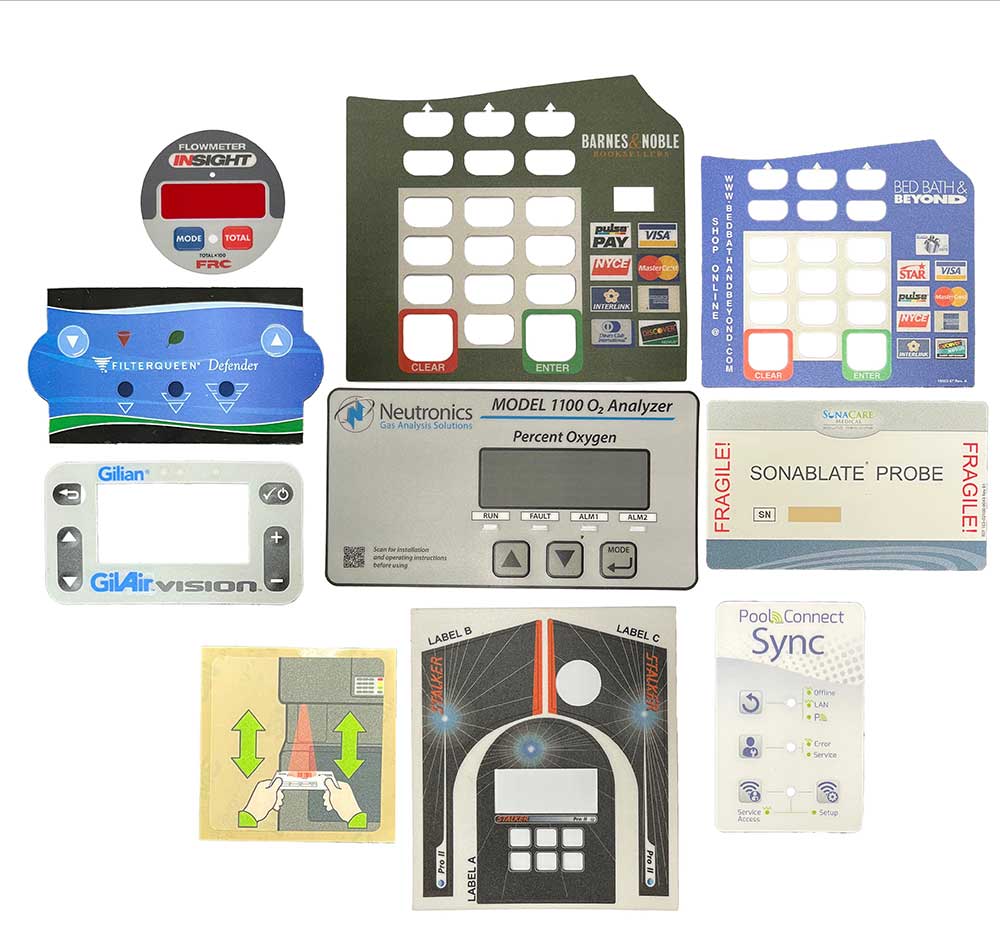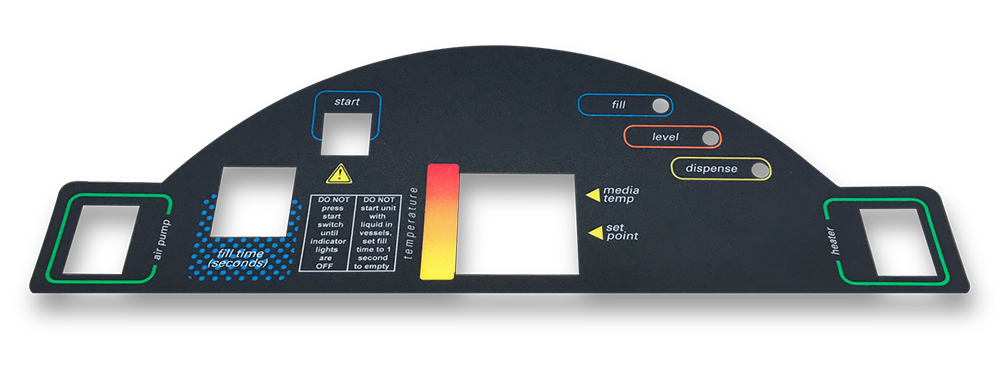How Glow-in-the-Dark Graphic Overlays Enhance Visibility and Ease of Use
Wiki Article
Comprehending Exactly How Graphic Overlays Work to Improve Your Creative Jobs
Graphic overlays serve as a crucial component in the realm of imaginative tasks, enhancing both visual communication and audience engagement. The effective assimilation of these overlays requires careful factor to consider of design concepts and goals.What Are Graphic Overlays?
Graphic overlays are aesthetic elements that are positioned on top of a base photo or user interface to enhance communication and customer experience. They offer different purposes, including providing additional details, guiding individual communication, and improving aesthetic appeal. Common applications of graphic overlays can be found in electronic interfaces, advertising, and educational materials.
Graphic overlays are usually produced making use of design software application, permitting developers to control dimension, color, and openness to attain the wanted result. Recognizing how to successfully apply visuals overlays is essential for developers intending to boost their imaginative tasks.

Benefits of Making Use Of Graphic Overlays
Making use of visuals overlays can dramatically boost the efficiency of aesthetic interaction across various tools. Among the key advantages is the capability to convey complex details succinctly. By layering graphics, text, and photos, overlays assist in the presentation of data in an extra digestible style, making it much easier for audiences to realize crucial ideas quickly.Furthermore, graphic overlays can enhance visual allure, accentuating particular elements within a layout. This is especially advantageous in marketing and advertising, where catching the customer's rate of interest is critical. The calculated usage of shades, forms, and typography in overlays can produce a natural and engaging aesthetic story, enhancing brand name recognition.
In addition, graphic overlays supply flexibility in layout. They allow designers to adjust content for various systems without starting from scratch, ensuring consistency throughout numerous channels. This flexibility is vital in today's electronic landscape, where content should be enhanced for diverse devices and styles.
Kinds Of Graphic Overlays
When considering the various types of visuals overlays, it is vital to acknowledge their diverse applications across different markets. Graphic overlays can be classified largely right into three types: useful, decorative, and informational.Practical overlays are developed to improve the functionality of an item. Commonly found in electronic devices, these overlays typically supply responsive responses via elevated switches or textured surfaces, enhancing individual interaction. They can also work as a protective layer, safeguarding the underlying components from wear and tear.
Decorative overlays focus on aesthetic improvement, allowing brand names to share their identification with dynamic designs and customized graphics. These overlays prevail in packaging, marketing, and point-of-sale materials, where aesthetic allure is important for bring in consumers.
Educational overlays, on the other hand, are used to convey important information or directions. They can be seen in applications such as signage, customer handbooks, and instructional graphics, where quality and readability are extremely important.
Each kind of graphic overlay offers a distinct purpose, adding to the general effectiveness of imaginative projects while addressing details requirements within various markets. Understanding these distinctions is essential for selecting the right overlay for your job.
Best Practices for Application
To ensure the successful application of visuals overlays, it is critical to establish a clear understanding of the task's goals and the particular needs of the end-users. Begin by carrying out extensive research study discover this to determine the target market and their choices, as this will certainly educate design choices and capability.
Following, develop a detailed plan that describes the overlay's combination, layout, and objective procedure. This strategy ought to include customer interface factors to consider, guaranteeing that overlays improve as opposed to block the customer experience - Graphic Overlays. Consider the aesthetic power structure and keep uniformity in layout components, such as color font styles, systems, and symbols, to promote brand name coherence
Evaluating is essential; collect feedback from a depictive sample of individuals to identify prospective problems and locations for improvement. Repeat on the design based upon user input and efficiency data. Furthermore, ensure compatibility throughout numerous gadgets and systems to make the most of accessibility.
Tools for Developing Overlays
Creating efficient visuals overlays requires the right devices to convert style ideas right into functional applications. Different software application and systems are available, each customized to details needs and skill levels.Adobe Photoshop and Illustrator are market criteria, offering substantial capacities redirected here for developing and manipulating overlays. These tools supply innovative features such as layer management, blending modes, and vector graphics, allowing designers to create elaborate and high-quality overlays.
For those looking for an extra easy to use strategy, Canva and Figma are excellent choices (Graphic Overlays). Canva's intuitive interface allows customers to produce overlays promptly using pre-designed themes, while Figma facilitates collaborative design in real-time, making it perfect for teams
Additionally, open-source options like GIMP and Inkscape supply durable performances without the connected costs of proprietary software. These tools enable flexibility in layout and can fit different file formats, guaranteeing compatibility across various platforms.

Final Thought
Finally, graphic overlays offer as powerful tools for enhancing imaginative jobs by offering aesthetic clearness, aesthetic appeal, and brand name consistency. Their varied applications, ranging from functional to ornamental, underscore their flexibility in communication. Sticking to best techniques and using ideal tools ensures reliable implementation and makes the most of the influence of overlays. By comprehending the basic concepts and benefits connected with visuals overlays, designers can considerably boost the quality and efficiency of their visual interactions.Graphic overlays offer as a critical element in the world of imaginative jobs, boosting both visual communication and audience engagement.Graphic overlays are commonly developed using style software program, permitting developers to adjust transparency, color, and size to accomplish the wanted impact.Furthermore, graphic overlays can boost aesthetic allure, attracting focus to certain elements within a style.Furthermore, visuals overlays give adaptability in design.In conclusion, graphic overlays offer as effective tools for enhancing imaginative projects by giving aesthetic clearness, next page visual allure, and brand consistency.
Report this wiki page